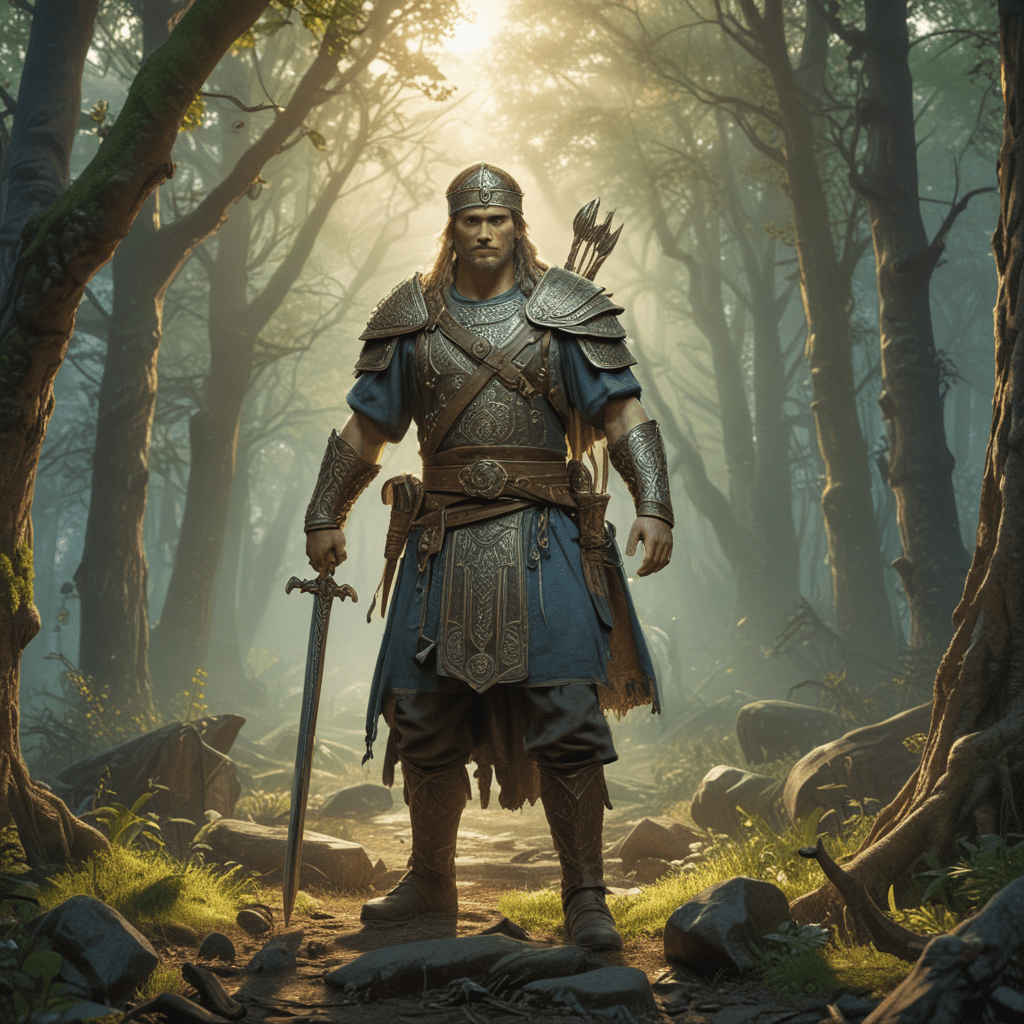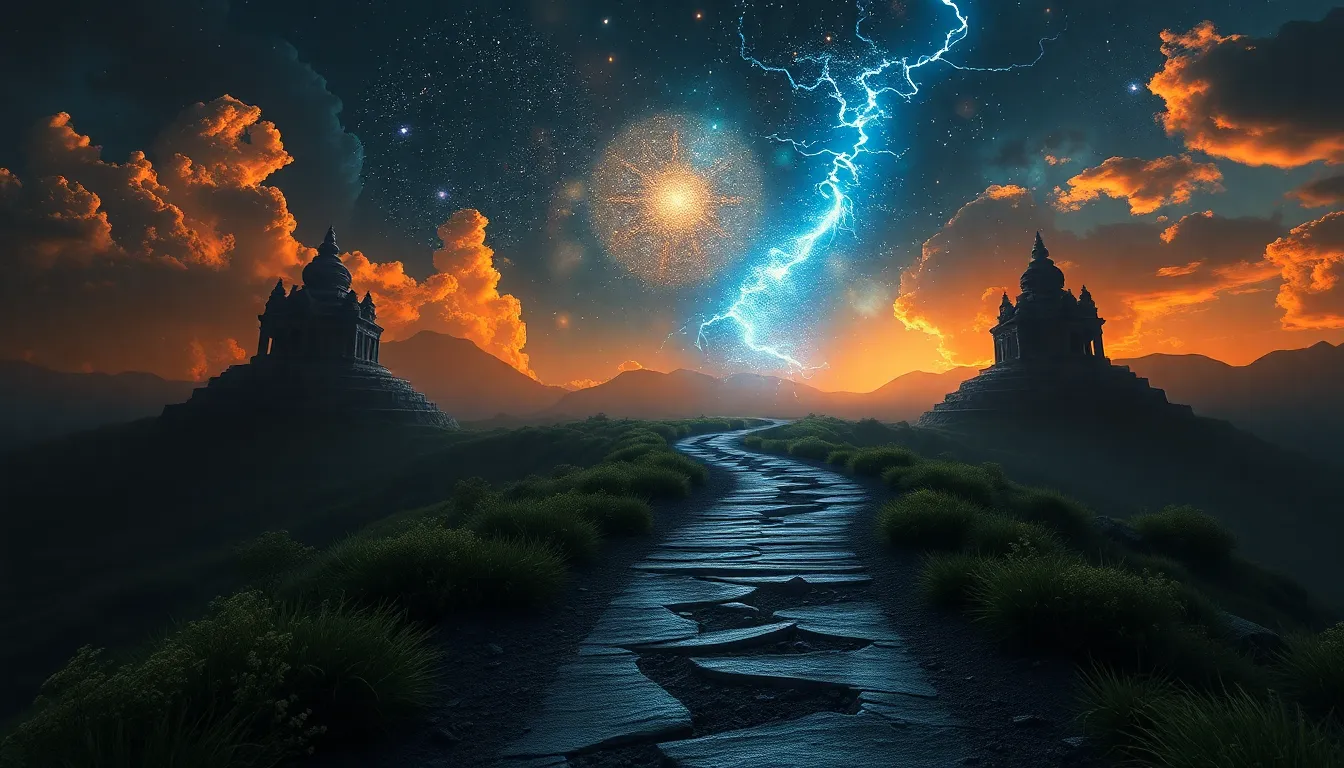The Cosmic Clash: The Most Dramatic Mythological Conflicts
Introduction to Mythological Conflicts
Mythology serves as a rich tapestry woven into the fabric of human culture, offering explanations for the mysteries of existence, the nature of humanity, and the workings of the cosmos. Among the most compelling elements of these narratives are the conflicts that define them. Cosmic clashes often reflect the struggles between good and evil, order and chaos, life and death, and they resonate deeply with the human experience.
Across various cultures, the concept of cosmic clashes manifests in epic battles among deities, titans, and heroes. These conflicts not only provide entertainment and moral lessons but also illustrate the values, beliefs, and fears of the societies that created them. The following sections delve into some of the most dramatic mythological conflicts from different cultures, highlighting their significance and consequences.
The Titans vs. Olympians: Greek Mythology’s Epic Battle
In Greek mythology, the Titans and Olympians represent two generations of gods engaged in a colossal struggle for supremacy. The Titans, led by Cronus, were the elder gods who ruled during the Golden Age. However, their rule was challenged by the younger Olympian gods, led by Zeus, who sought to overthrow their predecessors.
The Titanomachy, the war between the Titans and Olympians, was sparked by Cronus’s fear of being overthrown by his own children, leading him to swallow them at birth. However, Rhea, his wife, saved Zeus, who later rallied his siblings to challenge Cronus. Key events in this conflict included:
- The release of Zeus’s siblings from Cronus’s stomach.
- The gathering of allies, such as the Cyclopes and Hecatoncheires.
- The climactic battle that lasted for ten years, culminating in the defeat of the Titans.
The consequences of this conflict were monumental for the Greek pantheon. The Titans were imprisoned in Tartarus, while the Olympians established their reign on Mount Olympus, ushering in a new era of divine rule and shaping the myths that followed.
Ragnarök: The Norse Apocalypse
Norse mythology is steeped in tales of heroism, fate, and the cyclical nature of life and death. Central to this mythology is Ragnarök, a series of events that ultimately lead to the apocalypse for the Norse gods. Ragnarök embodies the inevitability of destruction and renewal, showcasing the tension between fate and free will.
Key figures in Ragnarök include:
- Odin, the Allfather, who seeks knowledge to prevent the inevitable.
- Thor, the thunder god, who battles the Midgard Serpent.
- Loki, the trickster god, who plays a crucial role in the events leading to the conflict.
Ragnarök culminates in a great battle that results in the deaths of many gods, including Odin and Thor. However, the aftermath signifies rebirth, as the world is reborn from the waters, and a new generation of gods arises, reflecting the Norse belief in the cyclical nature of existence.
The Battle of Kurukshetra: The Mahabharata’s Cosmic Struggle
The Mahabharata, one of the longest epic poems in the world, narrates the story of the Kurukshetra war, a colossal conflict between the Pandavas and Kauravas. This battle goes beyond mere physical confrontation; it embodies profound themes of dharma (righteousness) and karma (action and consequence).
Key characters include:
- Arjuna, the heroic archer torn between duty and morality.
- Krishna, who serves as Arjuna’s charioteer and divine guide.
- Duryodhana, the ambitious leader of the Kauravas.
The cosmic implications of the Kurukshetra war illustrate the struggle between right and wrong, highlighting how individual actions contribute to the larger tapestry of fate. The resolution of this conflict emphasizes the importance of adhering to one’s duty and the inevitable consequences of one’s actions.
The Egyptian Gods: Osiris and Seth’s Rivalry
The ancient Egyptians revered a complex pantheon of gods, among whom Osiris and Seth were central figures. Osiris, the god of the afterlife, represented order and resurrection, while Seth, the god of chaos and disorder, embodied strife and conflict. Their rivalry is a dramatic tale of betrayal and revenge.
Key events leading to their confrontations include:
- Seth’s murder of Osiris, driven by jealousy and ambition.
- The resurrection of Osiris by his wife, Isis, and their son, Horus.
- The ensuing battles between Horus and Seth for the throne of Egypt.
This conflict profoundly impacted the Egyptian worldview, reinforcing beliefs about the afterlife and the eternal struggle between order and chaos, culminating in the eventual triumph of Horus over Seth and the restoration of balance in the universe.
Quetzalcoatl vs. Tezcatlipoca: The Aztec Divine Duel
In Aztec mythology, Quetzalcoatl and Tezcatlipoca represent dual aspects of creation and destruction, embodying the eternal struggle between opposing forces. Quetzalcoatl, the feathered serpent, is associated with wisdom and life, while Tezcatlipoca, the smoking mirror, symbolizes conflict and chaos.
The historical and mythological context of their rivalry is rich with symbolism:
- Quetzalcoatl’s quest to create humanity and bring civilization.
- Tezcatlipoca’s jealousy and his attempts to thwart Quetzalcoatl’s efforts.
- The eventual confrontation that results in Quetzalcoatl’s exile and the creation of the Fifth Sun.
The cultural ramifications of their conflict are significant, influencing Aztec society’s understanding of duality, sacrifice, and the cyclical nature of life.
The Great Serpent vs. The Hero Twins: Maya Mythology’s Duality
In Maya mythology, the Popol Vuh tells the story of the Hero Twins, Hunahpú and Xbalanqué, who engage in a series of trials against the Great Serpent, often identified as a representation of the underworld or evil forces. This conflict encapsulates themes of duality, creation, and destruction.
The significance of the Great Serpent in Maya beliefs is profound, representing not just chaos but also the potential for renewal. Key elements of their battles include:
- The trials imposed by the Lords of Xibalba, the underworld.
- The transformation of the Hero Twins through cunning and resilience.
- The ultimate defeat of the Great Serpent, symbolizing the triumph of life over death.
This narrative explores the interplay between good and evil, creation and destruction, and the cyclical nature of existence, reflecting the Maya worldview.
The Hindu Devas vs. Asuras: The Eternal Struggle
In Hindu mythology, the Devas (gods) and Asuras (demons) represent the eternal struggle between good and evil. This conflict is not merely a battle of physical might but embodies deeper philosophical concepts of righteousness and morality.
Major conflicts between these two groups, such as the churning of the ocean (Samudra Manthan) and the war in the Ramayana, highlight their significance:
- The churning of the ocean to obtain the nectar of immortality.
- The various avatars of Vishnu, sent to restore cosmic balance.
- The ultimate defeat of Asuras, reaffirming the triumph of dharma.
The philosophical implications of this struggle resonate with the idea that good ultimately prevails over evil, reinforcing the moral order of the universe.
Modern Interpretations and Adaptations of Mythological Conflicts
The ancient conflicts explored in this article continue to influence contemporary media and literature. Modern adaptations often reinterpret these mythological stories, reflecting current societal values and issues.
Examples of films, books, and art inspired by mythological conflicts include:
- Movies like “Clash of the Titans” and “Thor,” which bring ancient battles to life for new audiences.
- Books such as Rick Riordan’s series, which blend mythology with modern storytelling.
- Art inspired by mythological themes, reflecting the timeless nature of these narratives.
These adaptations not only entertain but also serve as a means of reconnect




